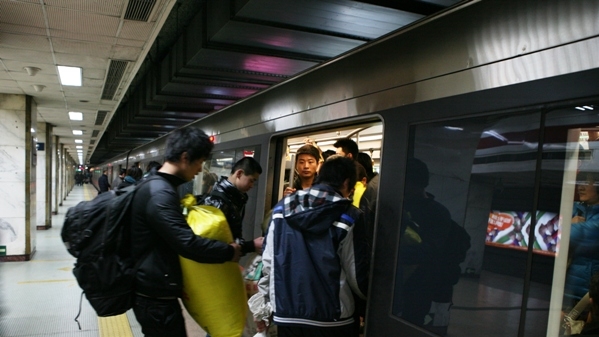BEIJING, December 14, 2012 - How can urban rail networks answer current and future Chinese urban mobility needs? How can they be built to structure urban growth? How can alternative options be evaluated to meet such needs in a given corridor? How can such networks be financed? How can the long term costs of an urban rail network be estimated and covered? What share of cost can be recovered from fares while taking into account social and environmental considerations? How can ridership and impact be maximized by integrating rail and bus services and by adjusting urban transport policies to encourage the use of public transport?
These were some of the many questions discussed during the first TransFORM event on Urban Rail that took place in the World Bank Office in Beijing on December 7, 2012.
This was the second event in China building on the Science of Delivery concept launched by World Bank President Jim Yong Kim. During the first meeting on November 30, Dr. Kim exchanged views with seasoned Chinese practitioners to develop a more scientific approach to define solutions addressing urban transport challenges as part of TransFORM. TransFORM is being launched as the first pilot under the World Bank-China Knowledge Hub established under a Memorandum of Understanding signed by Chinese Minister of Finance Xi Xuren and World Bank President Jim Yong Kim on November 27.
TransFORM seeks to support the development of new and improved solutions for a number of major urban transport challenges. TransFORM draws on lessons derived from Chinese and international urban transport practice, as well as on conversations with a broad network of practitioners, to develop solutions adapted for China. TransFORM will also share and disseminate knowledge gained through actual projects and pilots by capturing systematically the lessons learned through their implementation.
The event gathered over 65 leading practitioners from China’s urban rail companies and technical design institutes and a panel of distinguished speakers from China and abroad. The Bank and China International Engineering Consulting Company (CIECC) jointly organized this event. CIECC is the largest multi-disciplinary engineering consulting organization in China. It provides critical technical input to central government decisions on large construction projects including metro systems.
The workshop grew out of a desire to exchange knowledge on these key questions by agencies within China as well as introduce international best practice. The workshop was also aligned with the Bank’s growing portfolio of urban rail projects in China, with a lending project on urban rail currently active in Kunming, and two under preparation in Nanchang and Zhengzhou.
"I am very pleased to welcome all of you today to exchange knowledge and experiences on urban rail design, financing and integrated transport solutions for China's cities. Your views will be crucial for urban development as China adds up to 350 million people to its urban population over the next 20 years," said World Bank Country Director for China Klaus Rohland in his opening remarks
Prior to 1995, only two cities in China were operating metro networks, both of relatively modest size. Now, 15 cities are operating 62 lines with a total length of 1,777 km. By 2020, China is expected to complete more than 6,000km, more than the total length of all urban rail systems in Europe and North America combined.
Although this development is impressive, the sector is facing challenges in several areas. The first is the very scale and speed of development. Shen Jingyan, former vice president of the Beijing Urban Construction and Design and Research Institute, highlighted this in his presentation. “Chinese cities shouldn't be competing for the longest networks," Shen said. "Rail network should be designed to maximize overall benefit of public transport ridership in the city”. Qian Yaozhong, Vice President of the Shanghai Shentong Metro Company emphasized that “the approach to metro development needs to serve current needs by building metro lines where the population is currently located as well as prepare for future needs by building metro lines where future population is expected to be.”
The event was organized in three sessions, each focused on a key theme in China’s emerging urban rail practice: project planning and the analysis of alternatives, metro system financial sustainability, and multi modal integration.
The event highlighted the need to take a long term view in developing urban rail, with full integration in urban plans and urban transport systems. It cautioned participants that urban rail success can be fragile, based on international experience. Pressure from increasing costs combined with limited capacity to increase fares often leave insufficient resources to cover the significant renewal cost (about 35 percent of operating costs). The event emphasized the need to build urban rail only along corridors supporting high level of ridership intensity. It also shared the positive impact of integration with bus services in Santiago and Seoul.
Follow up discussions will be organized starting in January 2013, drawing on the lessons learned on each topic as part of this event. As such this event is part of longer term collaboration between the Bank, CIECC, and NDRC on the development of urban rail in China. “The TransFORM initiative, in combination with the Bank’s ongoing urban rail investments, provides a valuable vehicle for fostering collaborative solution development and sharing”, noted Gerald Ollivier, Senior Transport Specialist in the World Bank Office in Beijing.

